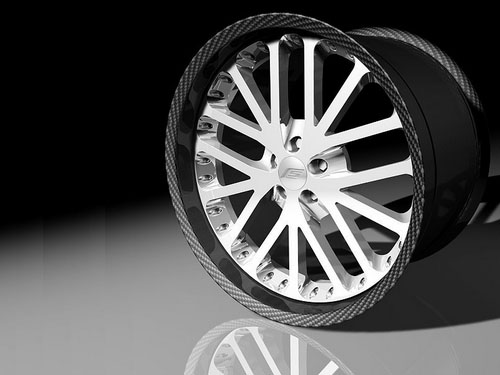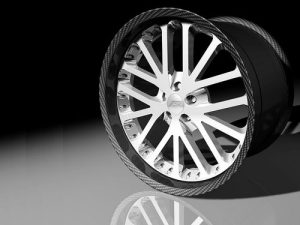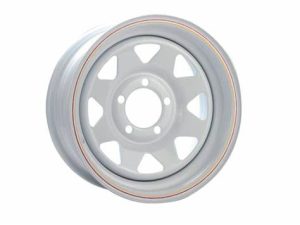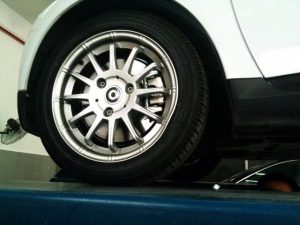The wheel rim, also known as the wheel hub, is a cylindrical component that supports the tire’s inner profile and is centered on the shaft, as the tire itself is soft. Wheels with the same diameter but different widths, or the opposite, or with different data for both, are suitable for different tires.
Modifying a wheel rim often involves making changes to the material, size, style, etc. of the wheel rim. The purpose of modifying wheel rims can be divided into two categories: one is to focus on performance, using wheel rim modifications to achieve the goal of changing a certain performance of the car; The other type is primarily visual, by modifying the wheels to make the appearance of the car more visually appealing and personalized.
At present, the wheel rim materials on the market can be divided into two categories:
Steel wheel: The main advantages are simple manufacturing process, relatively low cost, and strong resistance to metal fatigue. But the drawbacks are also obvious, such as heavy weight, high inertia resistance, poor heat dissipation, and so on.
Alloy wheel: The advantages of alloy wheels are light weight, high manufacturing accuracy, high strength, low inertia resistance, strong heat dissipation ability, good visual effect, etc. The disadvantages are complex manufacturing process and high cost.
In fact, when it comes to wheel rim modification, it is both simple and there are indeed many things to pay attention to. So today, let me take everyone to explore how to improve the wheel rim of a car!
Tires and wheels should be balanced and not excessively upgraded
The first thing to pay attention to is the issue of size. What size of wheel hub is suitable for your car? I believe this issue is the one that car owners who plan to modify their wheels most want to understand. Generally speaking, the width of the wheel hub is usually represented by 5.5J, 6J, and 7J, in inches. Usually, installing a tire with a tire width of 185 requires a 5-inch wheel hub width, 195 requires a 6-inch wheel hub width, 205 requires a 6.5-inch wheel hub width, and 215 requires a corresponding 7-inch wheel hub width. The diameter of the wheel hub comes in sizes of 12, 13, 14, 15, etc., measured in inches. Currently, there are models equipped with 20 inch wheels on commercial vehicles, such as Infiniti FX35, BMW X5, etc., but in the modification industry, this size is far beyond that. Nowadays, car owners hope that the larger the wheel hub modification, the better it will look cool and beautiful. However, as the size of the wheel hub increases, the width and flatness ratio of the tires also change. Therefore, it should be noted that in principle, the diameter change value should be controlled within 3% of the original specification for safety. If a wheel hub that does not match the previous tire is replaced, it is best to replace the tire together.
Pay attention to the size of the offset and do not have too much difference
Secondly, many people do not attach much importance to offset when upgrading wheel rims. The so-called offset, also known as ET value, refers to the distance between the fixed surface of the wheel screw and the geometric centerline (the centerline of the wheel cross-section). Simply put, it is the difference between the screw fixed seat in the middle of the wheel and the center point of the entire wheel. So, the smaller the offset value, the more outward the position of the wheel hub; On the contrary, the larger the offset value, the easier it is for friction to occur with shock absorbers, calipers, etc. There is actually a good way to solve the problem of offset, which is to add offset shims. Generally, only one can be added to each wheel and the thickness should not exceed 10mm.
The hole positions must be consistent, and attention should be paid to the PCD value
The hole position refers to the number of nuts that are locked in when the wheel is fixed, usually 4 or 5 holes. The PCD value is the diameter of the circle formed by connecting these hole positions. At present, most German cars on the market have 5 holes, and some wheels may have 8 holes drilled. Although this can adapt to two different PCD values, on the other hand, it will also reduce the rigidity of the wheels. So, when modifying the wheel hub, it is best to choose according to the hole position of the car itself, which is safer.




